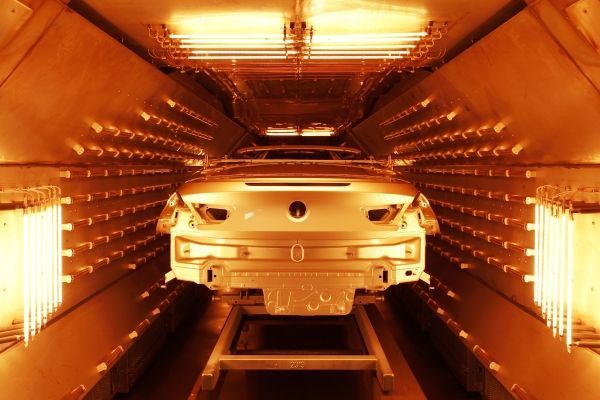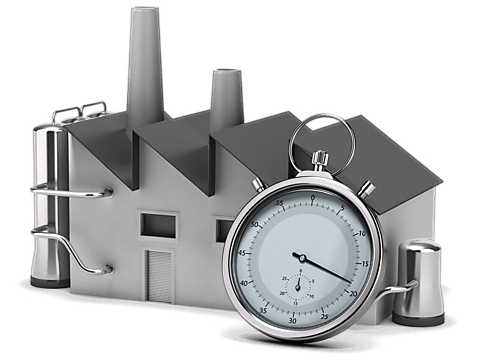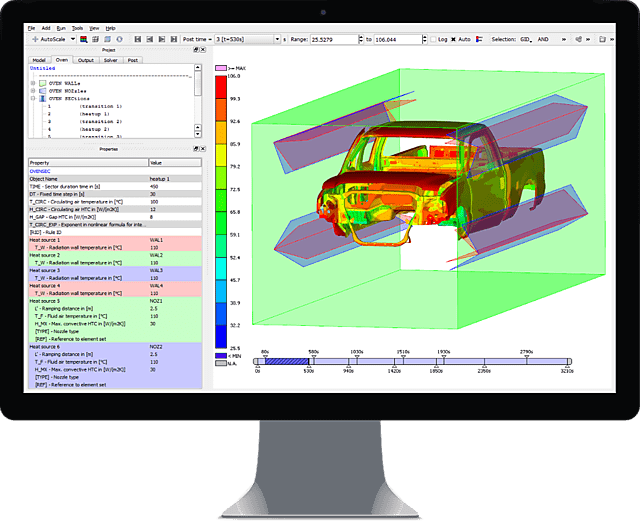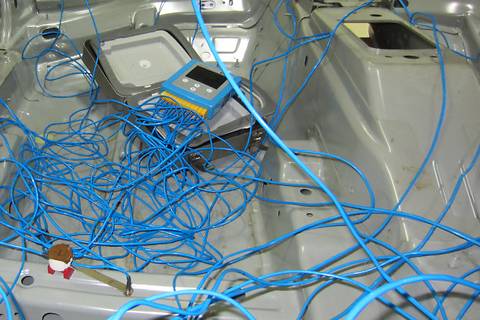
(Source: BMW Group PresseClub)
Automotive paint shops for coating a body-in-white are highly complex, multi-stage processes. Several layers of coatings and paints are stacked on top of each other for corrosion protection and visual appeal.
After each layer is applied a paint-drying oven takes care of curing and hardening. This usually occurs after each of the following steps:
- electrocoating for applying a corrosion protection coating
- primer application for filling any surface irregularities
- colored base coat application
- clear coat application for robustness
THESEUS‑FE OVEN simulates the full thermal development during the paint-drying process. For simulating the mechanical behavior of the car body under thermal stresses, we offer a user material routine for Simulia Abaqus. Its purpose is to describe the complex time-dependent viscoelastic behaviour of the adhesive materials used in the body-in-white.
Benefits gained by using THESEUS‑FE OVEN

Questions that arise when analyzing the paint-drying process include
- Is the car body uniformly heated, meaning that we avoid overheating of thin sheets and underheating of massive parts?
- Are we within the baking time envelope for optimal paint curing?
- What is the adhesives curing status over time and how are the mechanical properties changing as a result?
- Does unwanted deformation (warpage and buckling) occur as a result of thermal stresses?
With THESEUS‑FE OVEN you can gain deeper insight into the thermal behavior of the car body during the paint-drying process. Combined with our user material subroutine the thermal results can be used as input to a structural mechanics simulation for examining the mechanical effects of the paint-drying.
The combination of all these techniques allows users to optimize process times and ensuring the process quality during the early development phase. Experimental measurements are kept to a minimum and replaced with cost-efficient simulations. Being able to do this well before start-of-production guarantees that potential issues are detected early enough before required changes become too expensive or even impossible.
Contact us anytime to learn more about THESEUS‑FE OVEN module and the engineering services that we have to offer in this field.
Overview of THESEUS‑FE OVEN

THESEUS‑FE OVEN offers solutions for simulating the transient convective and radiative drying of lacquer and paint films applied in automotive paint shops. The simulation results are invaluable for verifying the paint-drying process and ensuring high-quality coatings.
Real-world paint drying ovens are modelled by prescribing temperature values for all walls and setting the positions and convective effect of all nozzles blowing air towards the car body. Paint dryers are usually divided into a series of sectors (heat-up, holding, and cooling). This sector division is mapped directly onto the model, a task conveniently supported by our graphical user interface with immediate visual feedback.
Our efficient numerical solver delivers the transient temperature distribution of the car body during its stay in the oven. Simulation results can be visually analyzed within the GUI including sophisticated evaluation procedures such as determining exposure times above a given threshold temperature.
Measured temperature curves at given locations can be taken as a reference to compare simulated and expected results directly.
Calibrating paint dryer parameters

Whenever a new paint drying facility is taken into use for the first time, the actual behaviour of the system is determined using simple temperature measurements on the body and the surrounding air. These measurements can be exploited using our Optimization module to fit unknown model parameters such as local heat transfer coefficients, a process known as oven calibration. Once this is done, one and the same paint dryer model can be used to simulate any number of car variants running through the facility.
The oven calibration workflow is well-documented and easily done by users of THESEUS‑FE OVEN. If advice is needed we are always at hand to support new customers with this task. Oven parameter calibration is also part of our standard portfolio of engineering services.


